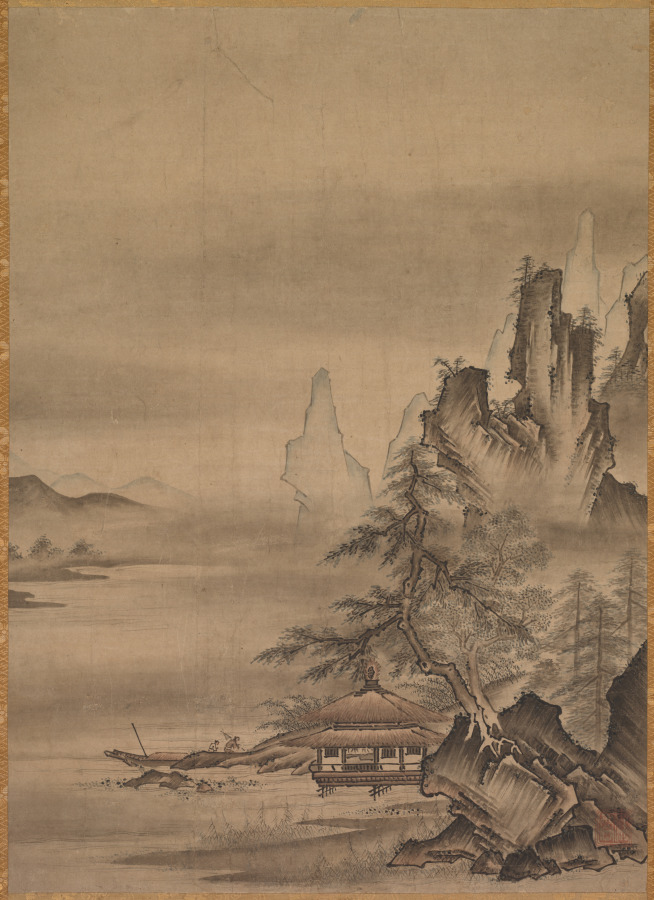| schema:description 9 | "measurements: Mounted: 165.1 x 55.9 cm (65 x 22 in.)" |
| schema:description | "id: 90267" |
| schema:description | "culture: Japan, Muromachi period (1392-1573)" |
| schema:description | "wall_description: This painting bears a seal reading Shōkei. The style of the seal resembles that used by Kenkō Shōkei (active about 1470–after 1523), a monk and painter at the Zen temple Kenchōji in Kamakura who studied in Kyoto for three years with Geiami (1431–1485?), painter to the shogun as well as curator of the shogun’s collection of art. However, the seal was carved to look like Shōkei’s and added to the painting at a later date by someone who thought the unsigned landscape was similar to his work. The painting has compositional and some stylistic similarities to images by other Kanto-based artists like Maejima Sōyū (active mid-1500s), who trained with Kano school artists. Specifically, the pines clinging to the massive boulder in front of a pavilion with mountains receding into atmospheric space—in a composition weighted in a single corner of the painting—is a Kanto-inflected derivation of the painting of the Zen monk-painter Tenshō Shūbun (active about 1414), whose work was a major inspiration for Kano school painters....(more)" |
| schema:description | "type: Painting" |
| schema:description | "collection: ASIAN - Hanging scroll" |
| schema:description | "technique: hanging scroll, ink and color on paper" |
| schema:description | "creditline: Gift from the Collection of George Gund III" |
| schema:description | "tombstone: Returning Home, mid-1500s. Japan, Muromachi period (1392-1573). Hanging scroll, ink and color on paper; mounted: 165.1 x 55.9 cm (65 x 22 in.). The Cleveland Museum of Art, Gift from the Collection of George Gund III 2015.513...(more)" |

